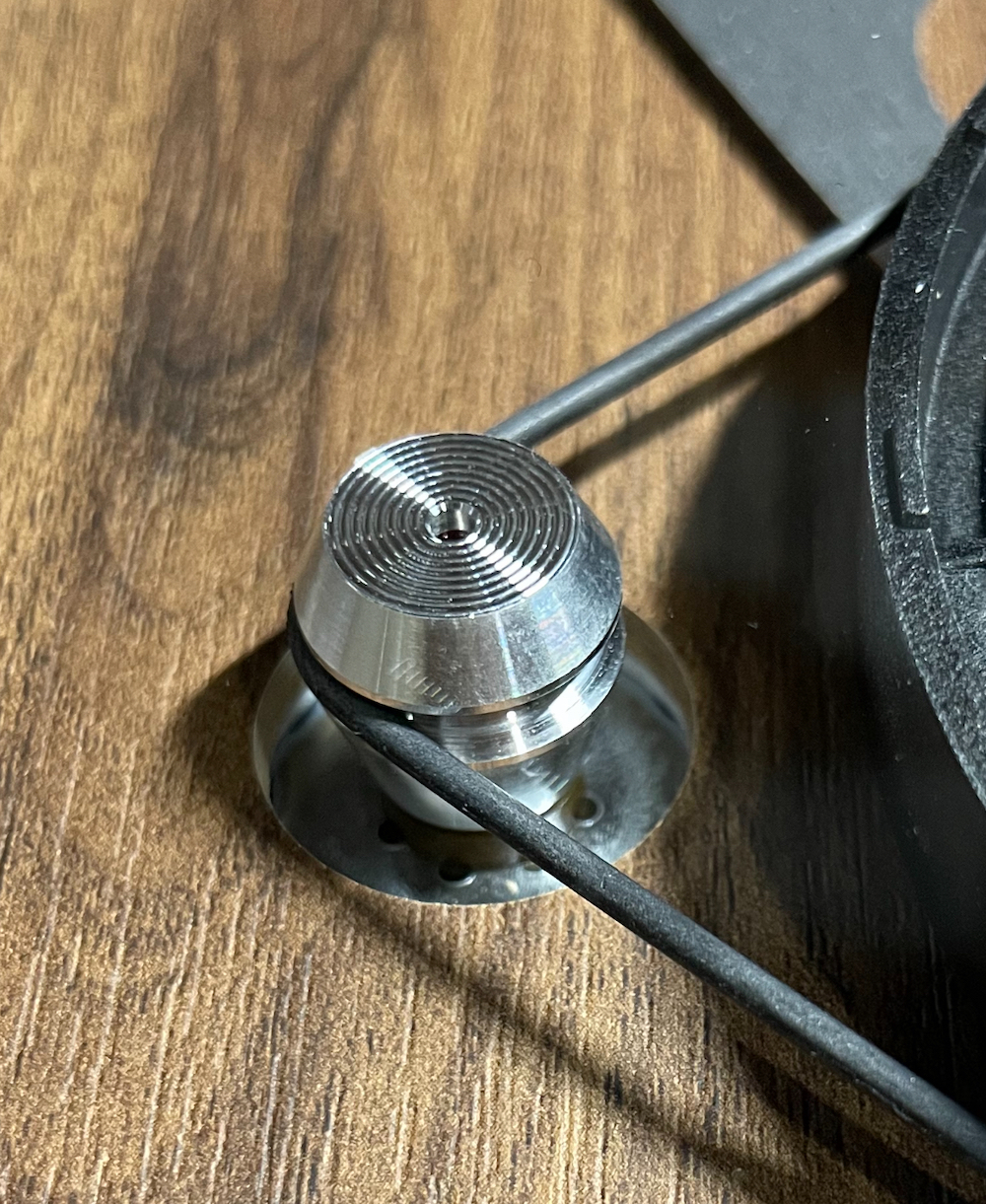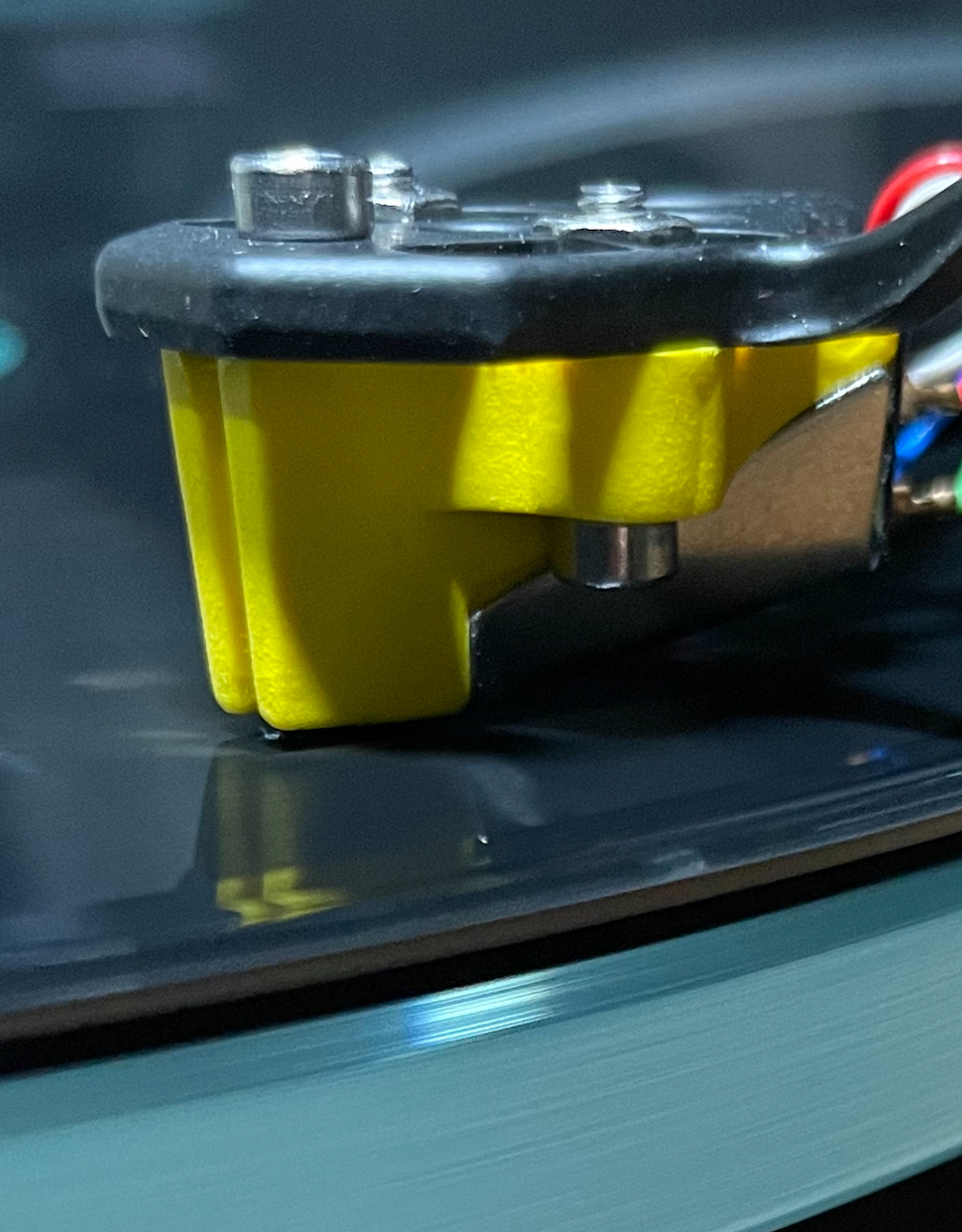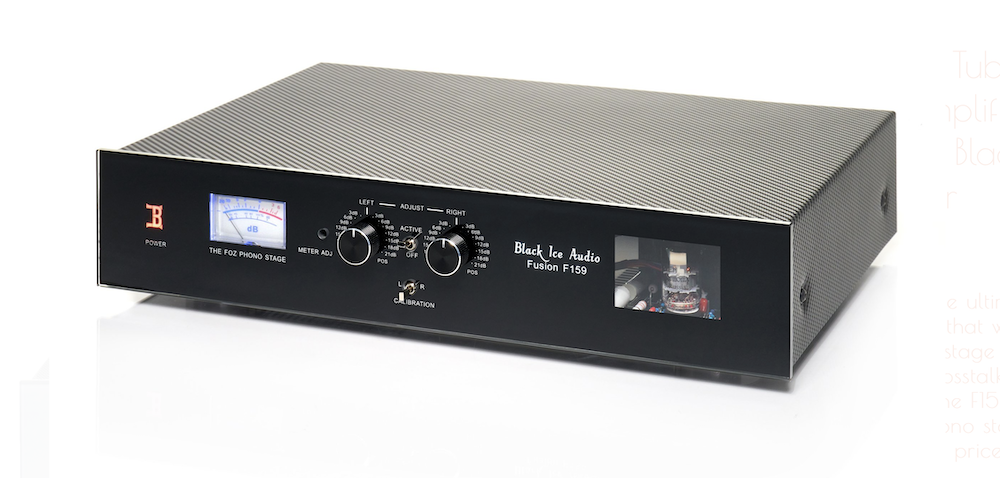Rega’s 50th Brings Forth a 50th Anniversary Planar 3
Limited by time not sales
The latest wrinkle in the 50 year Rega “vibration measuring machine” saga is a special edition of the “bread and butter” Planar 3. It’s no surprise that the cover photo of Rega’s 2016 hardcover book “A Vibration Measuring Machine” features a P3. It's the model that gets you all Rega’s core design concepts well-executed at an affordable $1595 price including a top of the moving magnet line Exact cartridge.
For its 50th, Rega offers the Planar 3 50th Anniversary Edition—a substantially upgraded version that for $100 more (($1695) includes a “hand-tuned” Neo PSU MK2 power supply, the Planar 6’s aluminum pulley, the Reference EBLT belt, a “walnut effect” finish plinth and aluminum badges on the plinth and exclusive "smoked" dustcover identifying it as the 50th anniversary edition. Buyers will get a lot more for the additional $100.
 Many iterations have passed since the Planar 3's mid-70s introduction and I've reviewed more than a few of them, but rather than list the changes and upgrades through the years, let me just summarize what today's P3 offers and why.
Many iterations have passed since the Planar 3's mid-70s introduction and I've reviewed more than a few of them, but rather than list the changes and upgrades through the years, let me just summarize what today's P3 offers and why.
Rega co-founder Roy Gandy's guiding engineering principle is rigidity (the other founder's name was Tony Relph; Rega is "Re" from Relph and "ga" from Gandy, with "Research" tacked on because Relph thought the speaker company name Acoustic Research sounded "posh", though the Rega book confuses AR with Audio Research).
Rigidity Über Alles
From Rega's point of view, a vibration measuring machine must maintain rigidity, even to the exclusion of set-up flexibility features that allow for VTA/SRA and azimuth adjustability. With that in mind, the P3's RB330 arm features a one piece aluminum casting that incorporates the bearing housing at one end and headshell at the other. The 330 is an upgrade of the earlier 300 and was designed using 3D CAD and CAM technology that helped define resonance reducing mass distribution along the armtube.
Eliminating junctions increases rigidity. Plug-in headshells are convenient but a junction at the arm's front? No! The arm's 3 point mount directly bolted to the plinth also adds rigidity compared to the older circular Rega mounting system, but it makes adjusting VTA/SRA that much more difficult. it's still possible, but that's a discussion for another time. The goal here is maximizing rigidity.
Though it looks like a wooden plinth (or an MDF board dressed in a walnut veneer) the P3's platform is made of a lightweight particulate core encased in a highly rigid phenolic resin skin. The plinths get lighter, stiffer and are fabricated from more sophisticated materials as you move up the Rega line. Gandy eschews damping with high mass, which he claims produces lower frequency vibrations that hang around longer, while his stiff and light constructions produce higher frequency resonances that more quickly evaporate.
A few years back, Rega added a stiffening component between where the tonearm mounts and the main bearing hub to form a structurally sound "stressed beam" assembly, here consisting of a 3mm phenolic bottom brace and a metallized skin phenolic top brace.
Rega moved to a 24V A.C. motor in the mid-2000s and more recently added the NEO MK2 PSU speed adjustable motor controller that also features a "hand-tuned" circuit, with each motor mated to its individually tuned controller. I watched this process at the factory when I last visited in 2017. The reduction in vibration and noise is major as was factory-demonstrated. The motor controller also provides speed adjustability, and electronic speed change among other improvements. How Rega designed and manufactures its EBLT drive belt made for among the most fascinating sections of that factory tour. Its improved diameter consistency makes an audible improvement over the standard belt.
Set Up and Use
You can't level the plinth so you have to make sure your platform is level or if need be use shims of some sort under the feet. The rest of the set-up is straight forward, basic and not worth going over. The Exact cartridge comes pre-mounted using Rega's three bolt mount system.
 That produces a Stevenson or "quasi-Stevenson” alignment which produces higher distortion over much of the record surface compared to Baerwald or Löfgren A, but lower distortion on the inner grooves as the second null point is closer to the end of the record.
That produces a Stevenson or "quasi-Stevenson” alignment which produces higher distortion over much of the record surface compared to Baerwald or Löfgren A, but lower distortion on the inner grooves as the second null point is closer to the end of the record.
See for yourself:
 Should you desire, you could remove the front bolt and align for either of those other geometries (or UNI-DIN). They will work. For the purposes of this review I left in the three bolts and after placing the counterweight on the stub and balancing the arm, I set the tracking force to the recommended 1.75g and set anti-skating the same. There's a bit of anti-skating force even with it turned off so you need to be careful setting tracking force. Best to use an external gauge and not rely on the arm's built-in gauge but it came pretty close to 1.75 anyway. And then, after hooking up the PSU and the output cables to a phono preamp you're ready to play records! One caveat: Rega insists on tying ground to the cable's outer shield. This eliminates the separate ground wire, which is convenient but means you can't use a transimpedance phono preamplifier with it—a problem I encountered some years ago writing for my previous endeavor.
Should you desire, you could remove the front bolt and align for either of those other geometries (or UNI-DIN). They will work. For the purposes of this review I left in the three bolts and after placing the counterweight on the stub and balancing the arm, I set the tracking force to the recommended 1.75g and set anti-skating the same. There's a bit of anti-skating force even with it turned off so you need to be careful setting tracking force. Best to use an external gauge and not rely on the arm's built-in gauge but it came pretty close to 1.75 anyway. And then, after hooking up the PSU and the output cables to a phono preamp you're ready to play records! One caveat: Rega insists on tying ground to the cable's outer shield. This eliminates the separate ground wire, which is convenient but means you can't use a transimpedance phono preamplifier with it—a problem I encountered some years ago writing for my previous endeavor.
After an extended break in while listening to many tunes I used the Shaknspin and got these results:
 As you can see, the 'table runs true at 33.33 rpm and if it didn't you can easily adjust speed. Wow and flutter numbers are very good as well.
As you can see, the 'table runs true at 33.33 rpm and if it didn't you can easily adjust speed. Wow and flutter numbers are very good as well.
Listening
As I was setting up the turntable Fred Kaplan emailed about a new ECM reissue of Keith Jarrett Solo-Concerts Bremen Lausanne (ECM-3-1035/37 ST) a 1973 release distributed in America by Polydor. He said it sounded bright to him. I have an original pressing so that became the first record I played on this turntable.
 The lead out groove area indicates ECM German stampers. I haven't played this record in decades. I have to tell you that piano is among the most difficult instruments to reproduce on vinyl and my expectations were greatly exceeded by what poured from the speakers, especially in terms of transient definition and dynamic contrasts. This is not criticism of Rega, but more what I expect at this price point compared to what's lurking in my room.
The lead out groove area indicates ECM German stampers. I haven't played this record in decades. I have to tell you that piano is among the most difficult instruments to reproduce on vinyl and my expectations were greatly exceeded by what poured from the speakers, especially in terms of transient definition and dynamic contrasts. This is not criticism of Rega, but more what I expect at this price point compared to what's lurking in my room.
I expected imprecise somewhat soft attack, with opaque, somewhat muddy sustain and weak decay with not a lot of black behind the notes. I've always thought of the $675 Exact as an "okay" moving magnet cartridge. I don't know if Rega has made changes to the hand assembled design, which features a fine line "vital" stylus, but whatever the reason or reasons, the sonic table set by the Planar 3 50th Anniversary Edition was a harmonically richer, fuller, more precisely delivered solo piano sound than I'd been expecting—especially in terms of attack precision. I was expecting to move the record to one of the other turntables to correctly assess this original pressing but no need.
This was as realistic and convincing a piano sound as I needed to hear and I sat through all six sides in a single listen, of course taken in mainly by Jarrett's dazzling, sometimes funky solo improvisations but also by the richness of the piano sound in all of its complexity—the attack transients, the wire, the wood, the reverberant field, plus the ability of the system to deliver a good semblance of the various live venues' ambience. A number of concerts recorded for this release were tossed for technical reasons the notes say but these passed audiophile Jarrett's listening tests. They'd pass mine too! I just didn't expect this modest rig to fully deliver the goods—and keep me seated through all six sides.
There's some razzle dazzle miking that distractingly spreads the piano across the stage on some of it, but no matter, the harmonic structure of each note was so precisely drawn each could be fully consumed in anticipation of the next. Not what I was expecting.
But before moving on to another musical example let me describe what adjusting azimuth electronically did to the already excellent picture using a feature of the Black Ice Audio Fusion F159 phono preamp (review coming right up). If you go to the link forgive them for the "Ice" misspell!
 This Jim Fosgate vacuum tube/MOSFET design features his Crosstalk Reduction Circuit (XT-R), which is sort of a built in Fozgometer with the ability, simply put, to electronically adjust azimuth. It can be switched out if unwanted, or in and out to hear the difference.
This Jim Fosgate vacuum tube/MOSFET design features his Crosstalk Reduction Circuit (XT-R), which is sort of a built in Fozgometer with the ability, simply put, to electronically adjust azimuth. It can be switched out if unwanted, or in and out to hear the difference.
The Exact cartridge was just slightly "off" but using the XT-R I was able to "dial in" better crosstalk performance and as expected significantly improved soundstage depth. The piano was not as "upfront" and there was a greater sense of the behind the piano reverberant field. The presentation was fine without it, but better switched in. More in the F-159 review.
Next up was the Blue Note Classic Series reissue of Freddie Hubbard's 1961 release Ready For Freddie ((Blue Note ST-84085/35966791). With Wayne Shorter, McCoy Tyner, Art Davis, Elvin Jones and Bernard McKinney on euphonium. The gorgeous ballad "Weaver of Dreams" again demonstrated attack precision, timbral generosity, image stability and solid three-dimensionality (the Black Ice gets credit as well of course). Tyner's piano, well back in space between the speakers, lost none of its transient clarity suspended in a pleasing cushion of air and Hubbard's trumpet in the left channel floated pleasingly on its own air cushion, with generous reverb decay. Shorter's sax had plenty of "reedy edge" and Art Davis's bass provided an effective anchor for the ensemble.
No doubt part of what I was experiencing was the excellence of the $1875 Black Ice F-159 (the number refers to Fosgate's attempts to nail down the design to his satisfaction) but the two together cost around $4000 and for that you get an awful lot of musical performance and satisfaction.
I'm not going to string together a list of the other records I played to assess the turntable's performance. Rather I'll get right to the conclusion by writing that this is by far the best P3 performance I've heard and the price is right!
There's One Big Problem in This Conclusion
And it's not the conclusion, which I telegraphed above but rather that as I was concluding this review, the importer, The Sound Organization informed me that this particular Planar 3 50th Anniversary Edition is the last one they were getting from Rega and there won't be any more coming from England. It's a limited by time edition and time is up, the year's almost over.
Then why run the review? One reason is that there still are some out there in the field (see below), but there will be no more, so The Sound Organization and Tracking Angle have decided that rather than return this final, sure to be a collector's item, best sounding Planar 3 ever (so far), we are going to give it away to a lucky Tracking Angle reader in a yet to be determined contest. We are working on what that will be and it must pass muster with the website's attorney. Once that's taken care of and we figure out how best to run it, we'll announce the contest and you'll all be invited to participate and one of you will win this Planar 3 50th Anniversary Edition turntable!
The S.O.'s Steve Daniels suggested I autograph it on the plinth bottom, something not even my massive ego considered, so if you win and want that, happy to oblige but if not, that's fine too. So stay tuned. Meanwhile all of what Rega has done here to make a better sounding Planar 3 has been accomplished. Good job!
Specifications
TECHNICAL SPECIFICATIONS
Tonearm
Hand assembled RB330 precision tonearm
Motor
24 V low noise motor
Platter
12 mm glass polished edge
Connectivity
RCA - Phono
Power
Via Mini DIN from Neo PSU
Dimensions (lid closed)
447 x 117 x 360 mm
Turntable Weight
6.0Kg
Neo Mk2 PSU
24 V AC protected by resettable fuse
Power Consumption
7.2 W
Voltage
24 V AC
Wall Power supply
Rega PS1 only
Speed control step size
0.01 RPM
Neo PSU Dimensions
180 x 150 x 50 mm












































